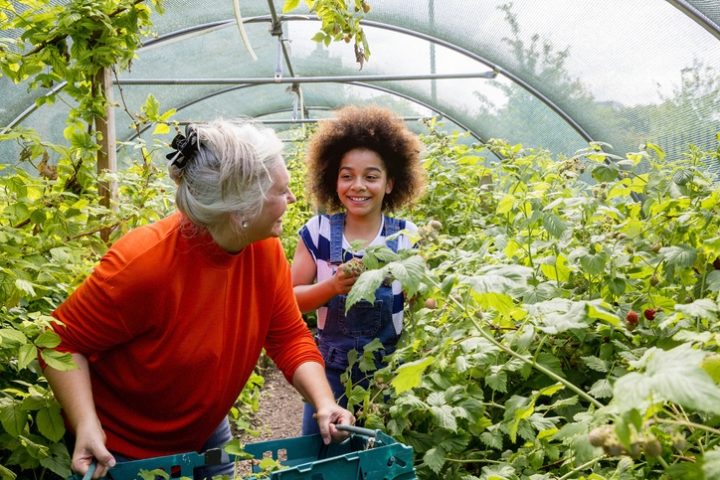Focusing Science and Engineering Learning on Justice-Centered Phenomena across PK-12

Why It Matters To You
- Teachers should help students engage in projects that address intersecting systems of oppression (e.g., racism, heteropatriarchy, poverty, settler colonialism, ableism, Islamophobia, etc.)
- District Staff & PD Providers should help educators develop phenomena-based justice units and learn to facilitate complex interdisciplinary conversations.
- School Leaders can help teachers connect with justice-centered organizations (e.g., to organize class visits, fieldwork, student presentations)—in addition to supporting justice within the school walls.
What is the Issue?
In the Framework vision for science education, students engage in active investigations to make sense of natural phenomena and analyze and build solutions to problems. Basing these investigations on justice-centered phenomena can be a powerful and rightful way to support science and engineering learning. Justice-centered investigations can open up important opportunities for students to engage in projects that support equity for communities and to see how the application of science and engineering are fundamentally entwined with political and ethical questions, dimensions, and decisions.
Authors:
BY DEB MORRISON, PHILIP BELL & ABBY RHINEHART
Reflection Questions
- Does your curriculum highlight how science has helped create many social inequities over time and how various scientific knowledges and practices can promote justice? How can it?
- Why might you shy away from using justice-centered science phenomena in your instruction? Whose interests are being served by not relating science instruction to specific forms of justice?
Things to Consider
- Science instruction should help learners explicitly explore moral and ethical decision-making and reasoning that has consequences for the thriving of people and the world. Part of being scientifically literate is to be able to relate science-related knowledge, actions, and decisions to ethical and moral commitments with a firm, critical grounding in history.
- Justice-centered science pedagogy addresses inequities as components of larger oppressive systems. Meaningful science education should teach young people not only to use the tools of science, but also to critically reflect on how they and others use these tools. This can help them see how scientifically informed decision-making is not straightforward—but occurs in complicated sociopolitical contexts. Listen to the NGSNavigators interview with Dr. Daniel Morales-Doyle for a rich discussion of this work.
- Student critical reflection and analysis should be accompanied by opportunities to take action and work toward more just, sustainable, and culturally thriving communities. This can help young people see science not as a “way out” of under-resourced communities, but as a way to work toward justice locally. This does not mean that investigations should promote oversimplified, technocratic ideas, such as that societies can simply “science” their way out of complicated interdisciplinary problems—but to see science as a knowledge base that can be used with others to promote justice.
Attending to Equity
- What science-related justice projects are meaningful to the communities you serve? What justice projects interest your students—especially those who may feel disenfranchised from science? How can you find out?
- It is important to know how to develop and apply a variety of knowledges and practices of science and engineering (along with other knowledge) in ways that support broad social justice movements.
- Decisions made using scientific knowledge are tied to values and ideologies (e.g., capitalism, collectivism), some of which are more powerful and present in our social decision-making. How do students learn about this context and then work towards justice?
- What organizations in your community relate to the justice projects you want to focus on? How might their expertise or resources support your efforts?
Recommended Actions You Can Take
- Framing learning around justice-centered phenomena can help young people develop scientific knowledges and practices that they can apply to social and environmental justice projects. Such phenomena might be related to inequitable land or resource use, adverse health impacts, food security, or involve disproportionate impacts from shifting lands and waters (e.g., severe storms, floods, drought). In biology, knowledge of inheritance and DNA technologies can be used to exonerate wrongly convicted persons.
- Community and citizen science and engineering projects can meaningfully support local science learning and the social goals of communities—and can take multiple interests, perspectives, and knowledges into account in investigations promoting social progress.
- Science education can also be a context for promoting justice for specific communities through place-based learning. One important context for this work is to design science learning environments in which Indigenous students and communities thrive—as part of promoting Indigenous cultural resurgence and multi-species justice.
ALSO SEE STEM TEACHING TOOLS
STEM Teaching Tools content copyright 2014-22 UW Institute for Science + Math Education. All rights reserved.
This site is primarily funded by the National Science Foundation (NSF) through Award #1920249 (previously through Awards #1238253 and #1854059). Opinions expressed are not those of any funding agency.
Work is licensed under a Creative Commons Attribution-ShareAlike 4.0 Unported License. Others may adapt with attribution. Funded by the National Science Foundation (NSF). Opinions expressed are not those of any funding agency.


 Email Feedback
Email Feedback


